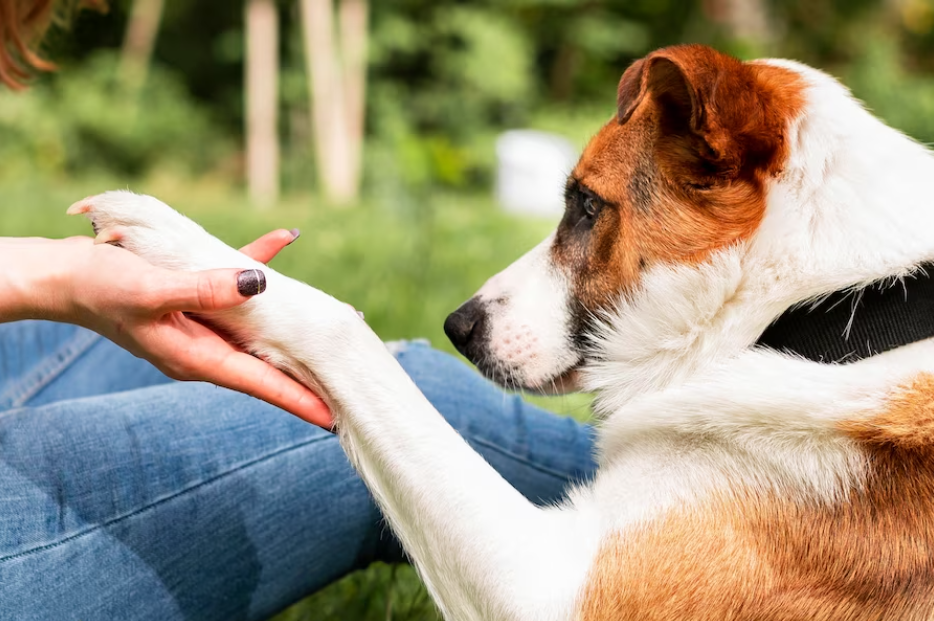Getting to Know Dog Breeds: Labrador Retriever

Are you considering getting a new furry friend? If so, the Labrador Retriever may be just the breed for you! These lovable and loyal dogs are one of the most popular breeds in the world, known for their friendly personalities and playful nature. But there’s more to these pups than meets the eye. In this blog post, we’ll dive into everything you need to know about Labrador Retrievers – from their history and physical characteristics to their temperament and exercise needs. So grab a cup of tea (or your pup’s favorite treat) and let’s get started!
History of the Labrador Retriever
The Labrador Retriever, or simply “”Lab,”” is one of the most popular dog breeds in the world. However, many may not know that this breed actually originated in Newfoundland and Labrador in Canada.
In the early 19th century, fishermen and hunters from England visited Newfoundland and brought back some of these dogs to use as retrievers for hunting waterfowl. These dogs were known for their excellent swimming abilities, which made them perfect for retrieving ducks and other game birds.
Originally called St. John’s Dogs after the capital city of Newfoundland, Labs eventually gained popularity throughout England as well. They were used by nobility for hunting expeditions and became a beloved family pet due to their loyal and friendly nature.
During World War II, Labradors served alongside soldiers as search-and-rescue dogs due to their intelligence and trainability. Today, they are still utilized in various roles such as service animals for people with disabilities, bomb-sniffing K9s, therapy dogs and more.
Despite its humble beginnings as a working dog breed on the coast of Canada, the Labrador Retriever has become a cherished companion all around the globe thanks to its gentle disposition coupled with an eagerness to please its human companions.
Origins in Newfoundland and Labrador
The Labrador Retriever breed originated in Newfoundland and Labrador, Canada, where they were originally bred as working dogs for fishermen. The breed’s history dates back to the early 1800s when they were known as St. John’s Water Dogs.
These dogs were used by fishermen to help retrieve fish that had fallen off hooks or escaped from nets. They would swim out into the water and bring the fish back to shore. Their webbed paws made them perfect for swimming long distances, while their thick coat kept them warm in cold waters.
In the mid-19th century, these dogs were brought over to England where they gained popularity among wealthy sportsmen who used them for retrieving game birds during hunts. It was during this time that the breed name changed from St. John’s Water Dog to Labrador Retriever.
Today, Labradors are one of the most popular breeds in America and are cherished not only for their hunting abilities but also as loyal companions and family pets. Despite their change in status from working dog to household pet, Labradors still retain many of their original characteristics such as loyalty, intelligence, and a love of water making them a great choice for active families who enjoy outdoor activities like swimming and hiking with their furry friend by their side!
Physical Characteristics
The physical characteristics of the Labrador Retriever make it a beloved breed among many dog owners. This breed is considered medium to large-sized, with males standing about 22-24 inches tall at the shoulder and females slightly smaller at 21-23 inches. They typically weigh between 55-80 pounds, depending on their gender and build.
One of the most notable features of this breed is its coat. Labradors have a short, dense double-coat that comes in three main colors: black, yellow, and chocolate brown. Some may also have variations such as silver or charcoal coloring.
In terms of life expectancy and health considerations, Labradors are generally healthy dogs with an average lifespan of 10-12 years. However, like all breeds they can be prone to certain health issues such as hip dysplasia or obesity if not properly exercised.
The physical attributes of the Labrador Retriever contribute greatly to its popularity as both a working dog and family pet.
Size and Weight
Labrador Retrievers are medium to large-sized dogs. According to the American Kennel Club (AKC), male Labradors usually measure 22-24 inches at the shoulder, while females stand slightly smaller at 21-23 inches. In terms of weight, males can weigh between 65-80 pounds, whereas females generally weigh around 55-70 pounds.
It is important to keep in mind that Labrador Retrievers have a hearty appetite and can easily become overweight if their diet and exercise routines are not carefully monitored. A healthy diet consisting of high-quality dog food and regular exercise can help maintain optimal weight levels for Labs.
One reason why size is important to consider when choosing a breed is space requirements. While Labs are adaptable and can thrive in many living situations, they do require sufficient space both indoors and outdoors to move around comfortably.
The size of a Labrador Retriever should be taken into account before bringing one home as a pet. Careful consideration must also be given to ensure that the dog’s nutritional needs are met with proper feeding habits combined with adequate physical activity levels each day.
Coat and Colors
The Labrador Retriever has a short, dense, and water-resistant coat that can either be black, yellow, or chocolate. The most common color is black with a shiny and sleek appearance.
Yellow-colored Labradors range from pale cream to fox red and are becoming increasingly popular among pet owners. Chocolate-colored Labs have a rich brown coat that can have various shades ranging from light to dark brown.
One interesting fact about the Labrador Retriever’s coat is that it sheds moderately throughout the year but heavily twice annually during seasonal changes. Proper grooming such as regular brushing will help minimize shedding.
In terms of texture, their coats feel smooth and soft to touch while still providing ample protection against harsh weather conditions. Their double-layered fur allows them to stay warm in colder climates.
Their coats require little maintenance except for proper hygiene practices like bathing every month or so depending on how dirty they get during outdoor activities or playtime at home!
Lifespan and Health Considerations
When considering getting a Labrador Retriever, it’s important to keep in mind their lifespan and potential health concerns. On average, Labradors live for 10-12 years. However, some may live longer with proper care and attention.
One of the most common health concerns for Labradors is hip dysplasia. This condition affects the hip joint and can cause pain or lameness in dogs. It’s important to purchase a puppy from a reputable breeder who screens their breeding dogs for this condition.
Labrador Retrievers are also prone to obesity if they’re not given enough exercise or have an unhealthy diet. Obesity can lead to other health issues such as diabetes, heart disease, and joint problems.
Regular veterinary check-ups are crucial for maintaining your Labrador’s overall health. Vaccinations, parasite prevention treatments, dental cleanings and regular blood work should be included in these visits.
It’s also essential that you provide your Labrador with mental stimulation through interactive games or training sessions as well as physical exercise like walks or playing fetch.
By being aware of potential health risks and providing proper care for your dog throughout their life, you can ensure that they live a happy and healthy life by your side!
Personality and Temperament
The Labrador Retriever is known for its friendly and outgoing personality. They are often described as being good-natured, loyal, and affectionate dogs that get along well with children and other pets.
Despite their size, Labradors are gentle giants that love attention from their owners. They are playful by nature and enjoy spending time outdoors playing fetch or going for long walks with their human companions.
Labrador Retrievers are also highly intelligent dogs that respond well to training. This breed has a strong desire to please its owner, which makes them easy to train in obedience skills such as sit, stay, come when called etc.
In addition to being great family pets, Labradors also make excellent service animals due to their keen sense of smell and ability to learn quickly. These qualities have made them popular choices for search-and-rescue missions as well as assisting the blind or disabled.
The Labrador Retriever’s temperament is one of its most endearing qualities. Their loving nature combined with intelligence and loyalty make them an ideal companion for families looking for a furry friend who will be a faithful member of the household for many years to come!
Energy Level and Exercise Requirements
Labrador Retrievers are known for their high energy level and require a significant amount of exercise to keep them healthy and happy. These dogs were originally bred as retrievers, which means they were trained to retrieve game for hunters, so it’s no surprise that they have a lot of energy.
To maintain their health, Labrador Retrievers need at least 30-60 minutes of exercise every day. This can include walks, runs or playing fetch in the backyard. They also enjoy swimming because it allows them to use all their muscles while cooling off on hot days.
If you’re unable to provide enough physical activity for your Labrador Retriever due to work commitments or other reasons, consider hiring a dog walker or taking him/her to doggy daycare where he/she can socialize with other pets while getting plenty of exercise.
It’s important not only to focus on physical activity but mental stimulation too. Boredom leads often leads dogs destructive behavior such as chewing furniture and excessive barking. Engaging toys like puzzle feeders help stimulate the mind keeping your pet occupied when separated from owners.
If you lead an active lifestyle and are looking for a companion who will join you on hikes/runs/jogs then owning a Labrador Retriever is perfect match!
Caring for a Labrador Retriever
Caring for a Labrador Retriever involves several aspects that need to be taken into consideration. Firstly, it’s important to ensure that your Lab has access to clean water and nutritious food at all times. This breed is known for its love of food, so make sure you’re not overfeeding them.
Regular exercise is also crucial for Labs, as they have high energy levels and require daily physical activity. Taking them on walks or runs, playing fetch or swimming are great ways to keep this breed active and healthy.
Grooming is another aspect of caring for a Lab. Their coat requires regular brushing to prevent matting and shedding. Labs also tend to enjoy getting dirty, so it’s important to give them occasional baths when necessary.
It’s essential to schedule regular vet check-ups for your Lab as they can be prone to certain health issues such as hip dysplasia and obesity. Keeping up with vaccinations and preventative care will help ensure their overall well-being.
Providing mental stimulation through training, games, and puzzles can prevent boredom in Labs which can lead to destructive behavior or anxiety issues.
Caring for a Labrador Retriever requires commitment but the love and loyalty they provide in return makes it all worth it!
Labrador Retrievers as Family Pets
Labrador Retrievers make great family pets due to their friendly and easy-going nature. They are known for being loyal, affectionate, and patient with children, which makes them a popular choice for families.
These dogs love to be around people and thrive on human attention. They enjoy playing games like fetch or going for walks with their owners. However, it’s important to note that Labs have high energy levels and require regular exercise to stay healthy both physically and mentally.
When it comes to living with other pets, Labrador Retrievers generally get along well with cats if they are properly introduced at a young age. As for other dogs, socialization is key in ensuring that your Lab gets along well with other canines.
Additionally, Labrador Retrievers are highly trainable due to their intelligence and eagerness to please their owners. This makes them ideal candidates for obedience training or even more advanced activities such as agility competitions.
If you’re considering adding a Labrador Retriever into your family dynamic, keep in mind that these dogs do shed quite a bit throughout the year and will require regular grooming sessions to maintain their thick coats. The loyalty and companionship of a Lab make them an excellent addition to any loving household!
Compatibility with Children and Other Pets
Labrador Retrievers are known for their friendly and outgoing nature, making them a great dog breed to have around children and other pets. Their easy-going temperament makes them an ideal family pet, as they are patient with children and enjoy playing with other animals.
When it comes to interacting with children, Labrador Retrievers tend to be gentle giants. They love kids and are known for being very tolerant of their playful antics. However, as with any dog breed, it’s important to supervise interactions between your Lab and young children to ensure that both parties stay safe.
As far as other pets go, Labs can get along well with most animals if they are socialized properly from a young age. They tend to do well in multi-pet households when introduced gradually over time. It’s important to remember that dogs have personalities too, so not all Labs will necessarily get along with every animal.
If you already have another pet at home and want to add a Labrador Retriever into the mix, make sure you introduce them slowly in neutral territory before bringing them home together. This can help reduce the chances of any conflicts arising later on.
Labrador Retrievers tend to be great companions for families with kids and other pets alike thanks to their friendly nature and adaptability towards different living situations.
Socialization and Training Tips
Socialization and training are critical aspects of raising a Labrador Retriever. These dogs are known for their friendly personalities, but it’s still essential to expose them to different experiences and people from a young age.
One way to socialize your Lab is by taking them on walks around the neighborhood, visiting parks or beaches, and introducing them to other pets and humans. This will help prevent any fear or aggression towards strangers in the future.
Training is also crucial in ensuring that your Lab behaves well in various situations. Consistency is key when teaching commands such as “”sit,”” “”stay,”” and “”come.”” Positive reinforcement methods like treats can be incredibly effective in motivating these intelligent creatures.
However, it’s important not to overdo treat-giving as this could lead to weight gain issues down the line. Labs love attention and physical affection too; incorporating praise into your training sessions will help strengthen the bond between you both.
Don’t forget about crate training! Providing a comfortable space for your pup can give them a sense of security while keeping them out of trouble when unsupervised. Remember never use crates as punishment tools; they should always associate their crate with positive experiences.
Conclusion
Labrador Retrievers are a popular breed for many reasons. Not only do they make great family pets, but they also excel in various roles such as search and rescue, therapy dogs, and hunting companions. Their history is rich and fascinating, with roots dating back to Newfoundland and Labrador in the 18th century.
When it comes to their physical characteristics, Labs come in three colors: black, chocolate, and yellow. They are also known for their friendly personalities and high energy levels. As with any dog breed, proper care is essential to maintain their health.
If you’re considering adding a Labrador Retriever to your family or already have one at home, socialization and training can help ensure that they grow into happy and well-behaved dogs. With love, attention, exercise routine maintenance — these furry friends will bring joy into your life for years to come!



